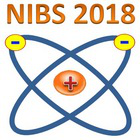Speaker
Dr
Akira UENO
(J-PARC)
Description
The Japan Proton Accelerator Research Complex (J-PARC) cesiated RF-driven Hˉ ion source has been stably operated for about four years. The J-PARC RFQ linac successfully accelerated the J-PARC requirement intensity of 60 mA, when a 70 mA beam was injected from the source. The high intensity beam with transverse emittances suitable for the RFQ is produced with several unique measures, such as, slight water molecules (H2Os) addition into hydrogen plasma, a low temperature (about 70ºC) operation of 45º-tapered plasma electrode with a 16-mm thickness, argon and/or nitrogen elimination in the hydrogen plasma along with filter-field optimization, and so on. In order to specify the beam intensity bottleneck of the source and derive the optimal plasma, extraction and ground electrode shapes, the higher extraction and acceleration voltages (Vext and Vacc) were examined. A 100 mA beam, whose about 92 mA beam has transverse emittances used for a common RFQ design, was stably operated with a duty factor of 5 % (1 ms x 50 Hz) by using the Vext and Vacc of 12 kV and 50 kV, respectively. This great progress with important information on the space-charge limited bottlenecks in the extraction and acceleration gaps will derive the optimal electrode shapes for the J-PARC operation and realize the next generation benchmark Hˉ ion source for high intensity and high energy Linacs.
Primary author
Dr
Akira UENO
(J-PARC)
Co-authors
Mr
Akira TAKAGI
(J-PARC)
Dr
Hidetomo OGURI
(J-PARC)
Dr
Katsuhiro SHINTO
(J-PARC)
Mr
Kiyonori OHKOSHI
(J-PARC)
Mr
Kiyoshi IKEGAMI
(J-PARC)

